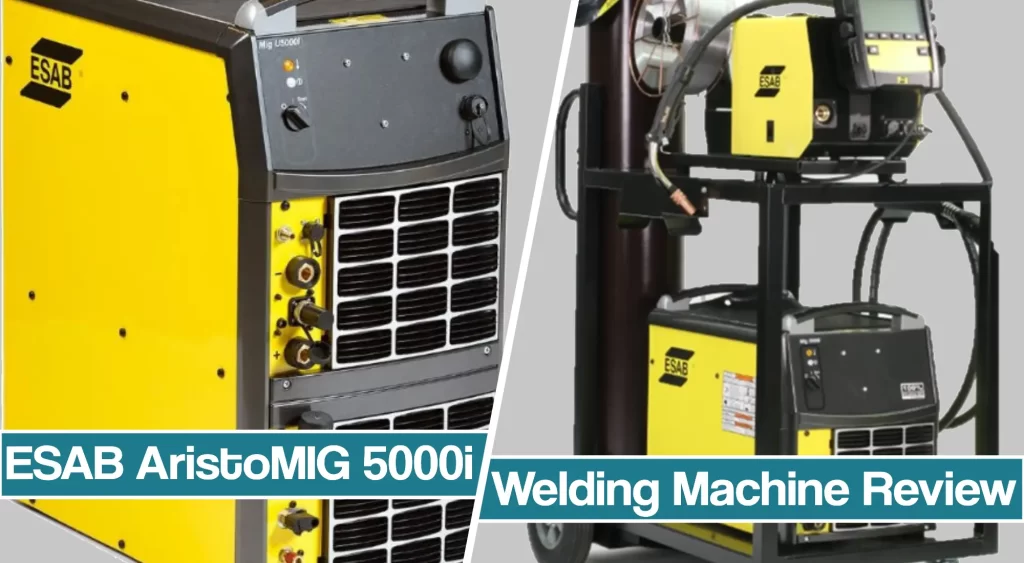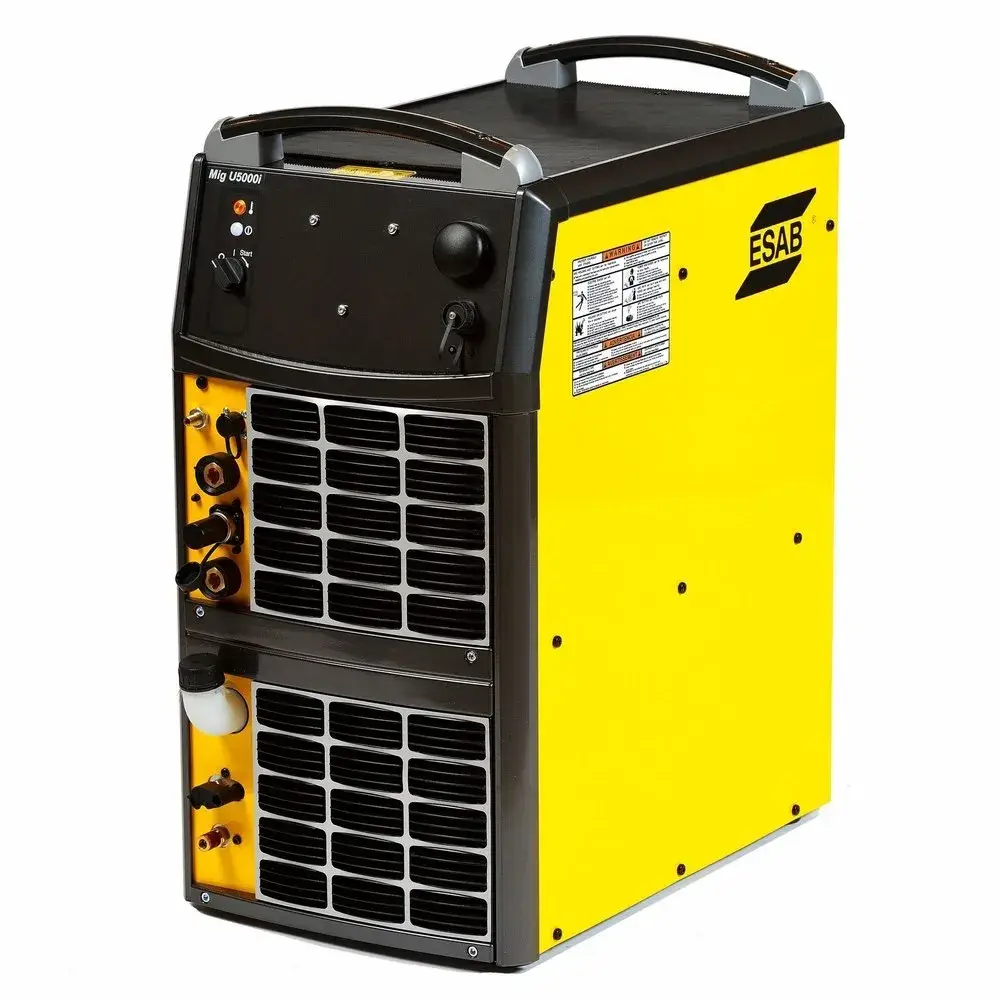ESAB’s inverter power source, the AristoMig 5000i series, was developed in cooperation with the ABB Global Power and Automation Technology Group and explicitly designed for use with ABB welding robots.
The new power source features ABB’s patented Integrated Interface that was made for robotic MIG/MAG welding of all materials used in metal fabrication industries.

The companies said the new interface allows easy set up of the robot and the power source through a single user interface to improve welding productivity.
The AristoMig 5000i Features
The AristoMig 5000i supports robotic short arc, spray arc, pulsed arc, and high-speed welding (rapid arc), and includes ESAB’s proprietary SuperPulse technology.
ESAB’s digital communication between the power source and robot controller provides good welding properties with a minimum spatter, even at high welding speeds.
The AristoMig 5000i weighs 66 kg (145 lbs) and has a permissible load at MIG/MAG of 500A/39V at 60 percent duty cycle and 400A/34V at 100 percent duty cycle.

The power source and the robot controller are set up through the robot FlexPendant, ABB’s portable interface unit that uses intuitive icons. One data set needs to be entered, which speeds programming while reducing the risk of human error.
Welding data, such as voltage and current, as well as error messages from the power source, is displayed on the robot Flex-Pendant – putting the operator in control of the welding process at all times.
Integrating power source and robot control simplifies the learning process and day-to-day operation and provides superior integration of the power source with the robot. Additionally, 300 ready-to-use synergic welding lines that provide complete combinations of welding method, material, wire diameters, and shielding gases, are designed for easy set-up and operation.
All the operator has to do is to select the desired wire-feed speed, and the power source automatically will determine the appropriate voltage. The interface also allows the operator to program custom synergic lines.
Pulse Operation
SuperPulse provides low-frequency pulsing between two complete weld schedules to provide good welding results. This technology helps operators to control the welding process better, especially for welding demanding materials and for MIG brazing.
SuperPulse features the following combinations of weld schedules:
Pulse-pulse, which is for welding aluminum and thin stainless steel. This setting provides a controlled heat input to help operators achieve a TIG-like appearance at a considerably lower cost and at welding speeds that ESAB said are three to four times higher than TIG welding.
Pulse-short arc, which is for welding thin, mild-steel welding. ESAB said this setting reduces heat input and makes welding less sensitive to gaps than regular short arc and pulse arc welding.
Pulse-spray arc, which is for positional welding of thicker materials such as aluminum. This setting allows vertical up-welding without requiring a weaving pattern, so it increases welding speed compared to standard positional welding.
Fast and easy setup is key to high productivity. Operators don’t have to worry if they select the correct welding procedure from the power source. Instead, they can focus on the work at hand. That’s the advantage of a single-point programming solution.
Power Supplies Maintenance
Dirt and grime that collects in the power supplies are the most common cause of power supply failure.
Grinding dust gets sucked into the machines through the equipment’s ventilation system, with condensation, grease, and other contaminants. If it’s not cleaned out, it can clog a system pretty well, causing the power supply to shut down.
Most manufacturers, including Lincoln Electric provide a maintenance schedule for their equipment so that shops get maximum performance over the long haul. You can read more about MIG welder maintenance in general in our in-depth guide on the topic.
However, depending on the shop environment, maintenance schedules can vary. For example, power supplies in a foundry require more frequent cleaning than those in a regular fab shop because of the increased levels of heat and dust in a foundry.
In spite of the fact that power supplies need regular cleaning and maintenance, they usually don’t get it.
Most shops never pull maintenance on a machine until they need to fix it, then they clean it.
Some shops try to build a frame around the power supply, then put a furnace filter near the machine, but even those have to be changed frequently, or the machine could shut down because its transformer shorts out.
Inverter technology is another answer.
Inverter-based welding and plasma cutting may provide the best return on investment for in-house plant maintenance and repair personnel, as well as the mechanical contractors that often perform this work.
Inverter technology allows shifting to a “rack” system that holds and powers multiple arcs from a primary connection. The inverters weigh less than traditional power supplies, and provide location flexibility.
One of the benefits of inverter technology with respect to maintenance and repair is the need for fewer machines. You can read more about inverter technology and how it fares against transformer power sources here.
When a job requires both CC and CV processes, a CC/CV inverter means that there is one less machine to purchase or transport to the job site.
However, with increasingly stringent OSHA restrictions and general air quality issues, most shops are cleaner than they were years ago. And, manufacturers are doing a better job of building power supplies mechanically tighter to prevent dust and dirt from entering the equipment and causing damage.




